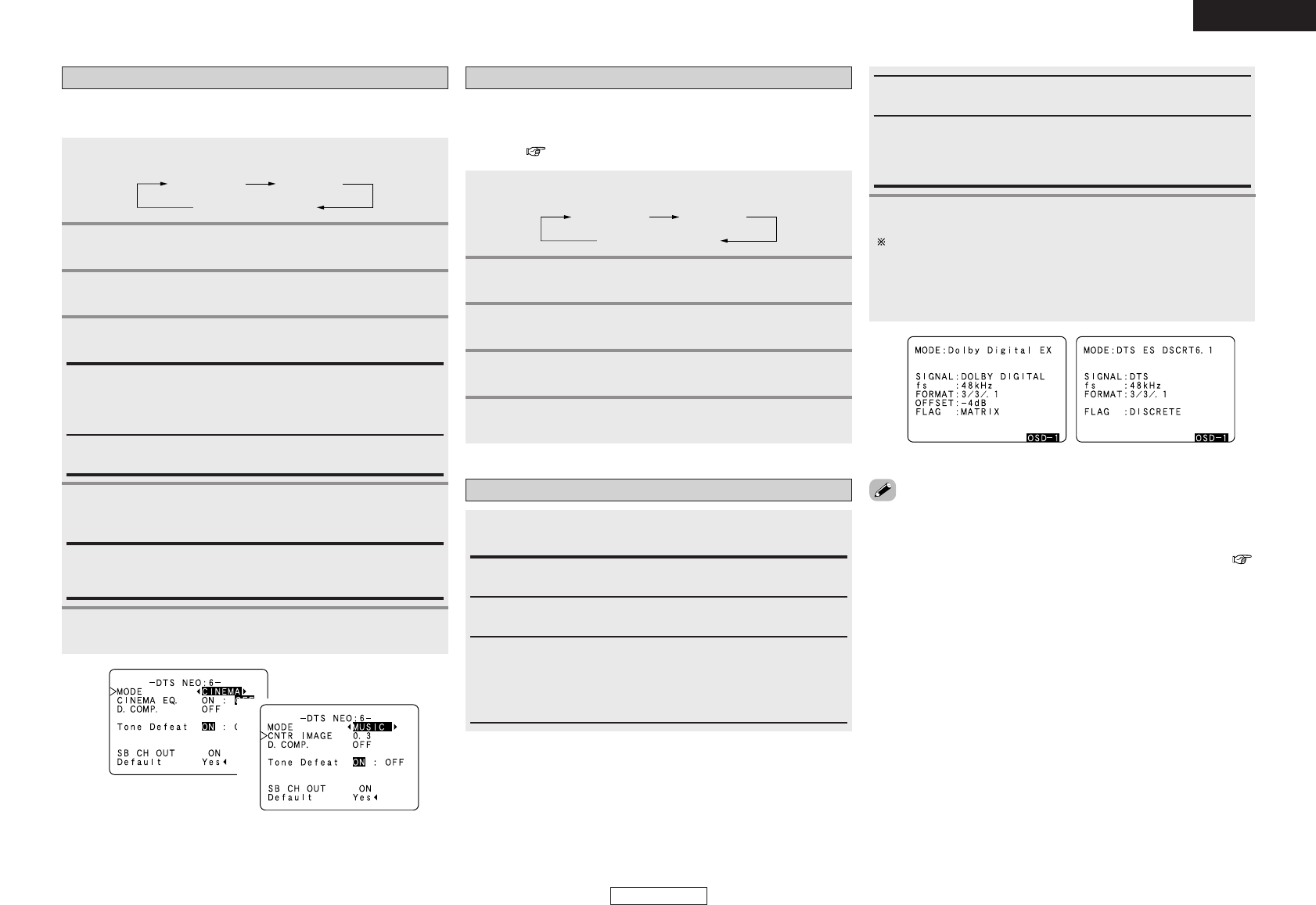
Basic Operation Basic Operation
26
ENGLISH
ENGLISH
Selecting the DTS NEO:6 mode
It is possible to play analog input signals and digital input signals (2-
channels) in the surround mode.
Press SURROUND PARAMETER.
Play a program source.
Press
FF GG
to select the play mode.
2
3
4
Press [STANDARD] to select “DTS NEO:6”.
DOLBY PLIIx
NEURAL SURROUND
DTS NEO:6
1
CINEMA:
This mode is optimum for playing movies. Decoding is performed
with emphasis on separation performance to achieve the same
atmosphere with 2-channel sources as with 6.1-channel sources.
MUSIC:
This mode is suited mainly for playing music.
Selecting the NEURAL SURROUND mode
It is possible to play analog input signals and digital input signals (2-
channels) in the surround mode.
This is the optimum mode for playing sources recorded in XM HD
Surround ( page 34, 35).
Play a program source.
Press SURROUND PARAMETER.
Press [STANDARD] to select “NEURALSURROUND”.
1
3
2
Press
DD HH
to select the item, then press
FF GG
to set.
Press ENTER or SURROUND PARAMETER.
5
4
DOLBY PLIIx
NEURAL SURROUND
DTS NEO:6
Press
DD HH
to select the item, then press
FF GG
to set.
When “MUSIC” mode is selected:
Press ENTER or SURROUND PARAMETER.
CNTR. IMAGE:
The expansion of the center channel can be adjusted. (0.0 to 1.0,
default : 0.3)
5
6
3
5
(When “MUSIC” is selected)
OFFSET:
Displays the dialog normalization offset value.
FLAG:
“MATRIX” is displayed if the input signal has undergone matrix
processing, “DISCRETE” is displayed if the input signal has undergone
discrete processing.
SIGNAL:
Displays the type of input signal.
fs:
Displays the input signal’s sampling frequency.
Checking the input signals
Press [ON SCREEN].
1
Press [ON SCREEN] again.
OSD-1 : Input signal
OSD-2 : Input/output settings
OSD-3 : Auto surround mode
OSD-4 ~ 6 : USER MODE 1 ~ 3
OSD-7 ~ 13 : Tuner preset stations
2
• “OSD-1”-“FLAG” is not displayed if there is no FLAG identification
signal in the input signal.
• OSD-3:
This is displayed when the auto surround mode is set to “ON” (
page 52) and the input mode is set to “AUTO”.
It is not displayed when the input mode is set to “ANALOG” or
“EXT. IN”.
1
Example: Dolby Digital Example: DTS
FORMAT:
Displays the input signal’s number of channels (front / surround /
LFE on/off).
“SURROUND” is displayed for 2-channel signal sources recorded
in Dolby Surround.


















